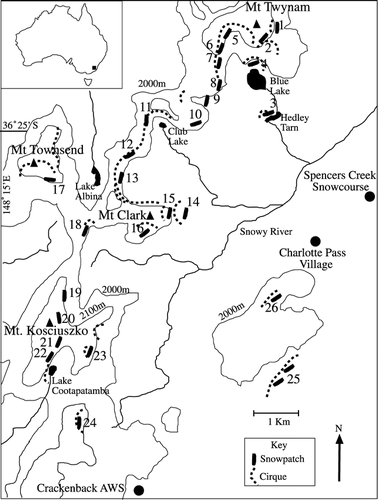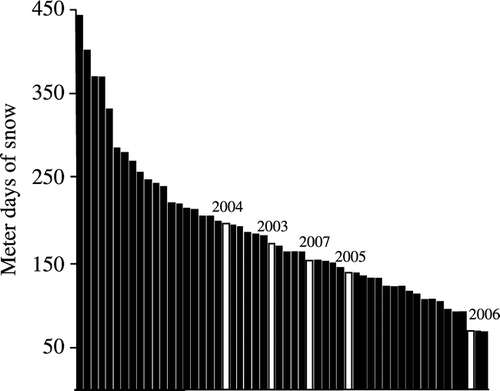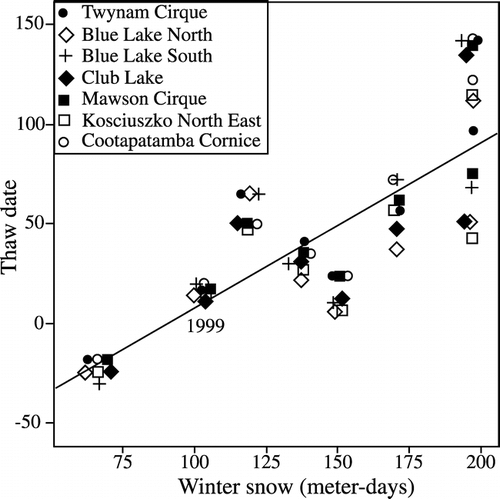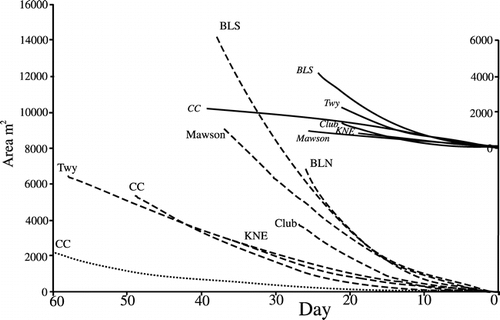Figures & data



Table 1 Number of snow accumulation events (all weekly increases in snowpack of ≥10 cm at Spencers Creek) and mean ± standard deviation increase in snowpack depth. The percentage distribution of direction of winds ≥6 m sec−1 on days with precipitation in the week before snow accumulation events.


Table 2 Days required in 2006/2007 for snowpatches to decay to zero from the first measurement (square meters), together with the average maximum and minimum temperatures (°C) for that period. The dates for the equivalent starting point for 2004/2005 and 2005/2006 were calculated from equations for the decay lines in .
Table 3 Mean (± standard error) of snow-free season days beneath the center of snowpatches, in short alpine herbfield (SAH), and tall alpine herbfield (TAH) over four summers 2003/2004 to 2006/2007, together with the percentage cover of vegetation and number of plant species beneath the zones.